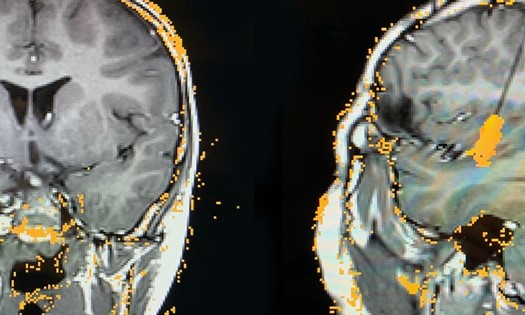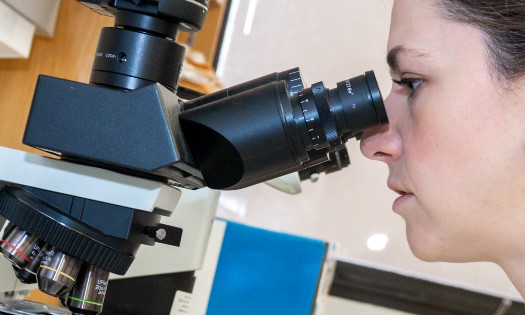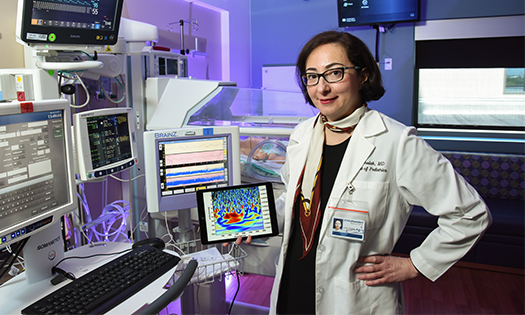The physiology of Fontan patients stresses organs systems throughout the body. This makes it critically important to recognize signs that the physiology is failing and that a heart or multiorgan transplant is necessary.
Among these signs are repeat episodes of protein-losing enteropathy (PLE), an intestinal problem that causes loss of protein and decreased absorption of nutrients and electrolytes over time. It tends to be insidious in onset but can cause significant debilitation overtime. If patients are not referred for heart transplant early enough, recurrent PLE flares can weaken them beyond the point that transplant remains a viable option.
Monitoring PLE and other ripple effects of Fontan physiology, including kidney damage, is a specialty of the Fontan program at Children’s Health℠. The team uses a multidisciplinary approach and rigorous testing and monitoring to detect, manage and treat complications when they arise.
“Knowing the covert ways that Fontan failure can develop helps us intervene early to prevent worsening and ensure that our patients are able to get a new heart when they need one,” says Maria Bano, M.D., Pediatric and Adult Congenital Cardiologist at Children’s Health and Assistant Professor of Pediatrics at UT Southwestern.
Avoiding PLE and Frailty
Fontan surgery is usually completed by the time patients are 3 to 5 years old. Though many of these patients thrive for years afterward, nearly all will eventually develop failure of the physiology and will require consideration for a transplant.
“Pump failure is well recognized and monitored in these children, but heart transplant may be necessary for numerous other reasons as well,” says Dr. Bano.
Among the less common ways the Fontan circulation may fail is PLE, a complication in which the intestines fail to absorb protein and other nutrients, and instead leak them into the gut. In Fontan patients, this likely happens because of extra venous pressure in their lymphatic system. PLE may flare up intermittently and patients tend to have a waxing and waning course.
If allowed to persist unabated, PLE can deplete patients so much that they reach a severe state of malnutrition – a condition now recognized as “Severe Fontan frailty.” At this point, they may be too weak to withstand surgery for a transplant and may need to be referred to a palliative care pathway and face a significant decrease in life expectancy.
“One of my goals as a Fontan failure expert is to help cardiologists recognize these patients on a slow slide and refer them in a timely fashion for advanced therapies,” says Dr. Bano.
She urges providers to watch for symptoms like abdominal pain or swelling, diarrhea, poor wound healing and loss of appetite. Doctors suspecting PLE can confirm the diagnosis by measuring protein levels in the stool and albumin levels in the blood.
For treatment, Dr. Bano often prescribes a combination of medical therapies and works with nutritionists on the Fontan team to find a diet that is easier for the patient to tolerate. Nutritionists may also recommend supplements to replace important electrolytes and other nutrients to prevent further debilitation.
While occasional PLE episodes are probably not serious, Dr. Bano monitors patients very closely after their first flare-up. When PLE recurs frequently or is unrelenting, she refers for transplant.
Multiorgan Evaluation Prior to Transplant
When a Fontan patient is referred for heart transplant, the transplant team assesses liver and kidney function to see whether the patient should be evaluated for multiorgan transplant. Both the liver and kidney can develop significant damage from elevated venous pressure in the Fontan circuit and from inadequate blood and oxygen delivery by the single-ventricle heart.
At Children’s Health, patients referred for heart transplant get a comprehensive workup over a week. A multidisciplinary selection committee then meets once a week to discuss whether to proceed with a heart transplant, perform further tests, try alternate therapies or consider the patient for multiorgan transplant.
Dr. Bano estimates that, based on results from their initial workup, about one in five Fontan patients referred for heart transplant may require evaluation for another organ.
“After heart transplant, we want to send patients home without needing dialysis or suffering issues related to liver or other organ failure,” she says.
Getting a Precise Measure of Kidney Function
In young Fontan patients requiring heart transplant, kidney damage is more likely than liver damage, which usually takes longer to progress. To determine whether a heart transplant candidate also needs a kidney transplant, Mouin Seikaly, M.D., Medical Director of Pediatric Kidney Transplant and Professor of Pediatrics at UT Southwestern, focuses on the patient’s glomerular filtration rate (GFR).
The trick is getting a precise measurement of GFR.
“Serum creatinine is a poor surrogate, because it can make GFR appear higher than it actually is,” says Dr. Seikaly.
This is because creatinine is affected by both GFR and muscle mass. Muscle mass in children with heart disease is often lower than normal, so low levels of creatinine in the blood don’t necessarily prove a high and healthy GFR.
To find a better measurement of GFR, more than 25 years ago Dr. Seikaly developed the method of using radio-labeled iothalamate as a marker. With this method, a low dose of radioactive iothalamate is injected into the patient’s vein, and the rate of disappearance from the blood over time is used to accurately measure GFR.
“If the GFR is less than 30 ml/min/1.73m sq and the child is over 15 kilos, I consider the patient a potential candidate for both heart and kidney transplantation,” he explains.
Seeing Young Bodies Restore Balance
Like all Fontan providers, the team at Children’s Health wants to see patients thrive with their own hearts for as long as possible. When a patient needs a referral to transplant, it’s common for patients and providers to feel let down.
Dr. Bano reminds her colleagues – and herself – that they’ve seen many patients come out of heart transplant healthier than they’ve ever been.
“Their PLE goes away for good, and so do the issues caused by venous pressure and pump failure,” says Dr. Bano.
While some patients may develop worsening kidney function after heart transplant, many of them recover it quickly. Livers are especially resilient, in some cases bouncing back from full-blown cirrhosis in young children who go through heart transplant.
“It’s amazing to see, and a huge comfort to know that we can start this recovery in motion for kids who have no other option left,” says Dr. Bano.
Learn more about innovative cardiology care and research at Children’s Health.



